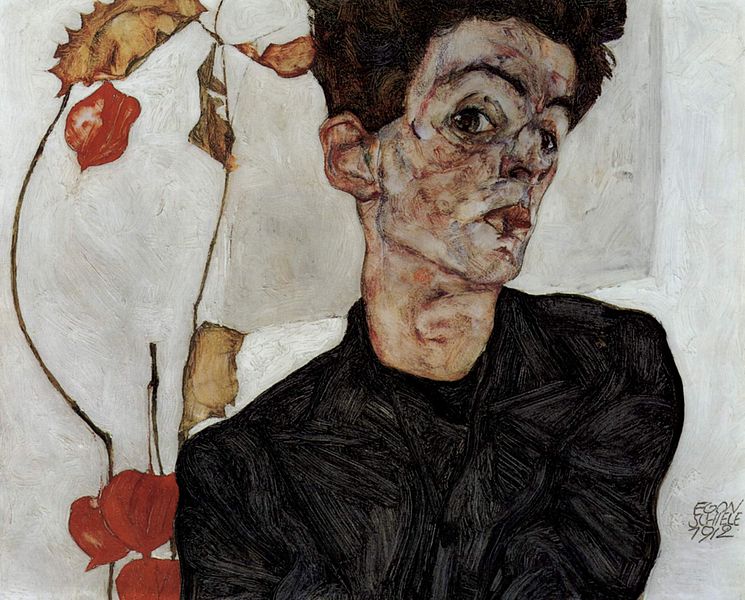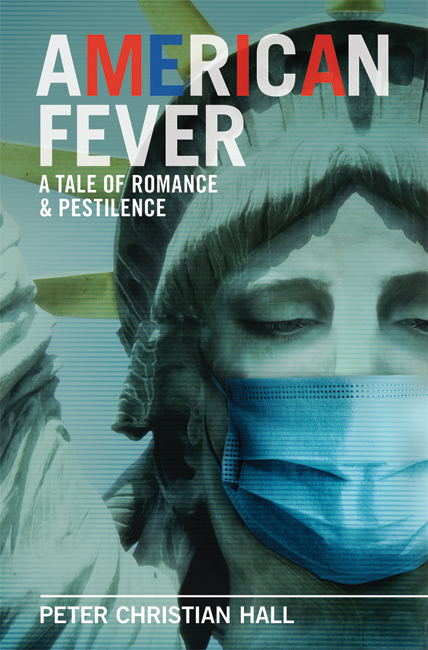Day 28: Progress Does Not Make Perfect
The flu debunkers are back on TV, gracelessly hailing numbers that indicate a lot of old folks are dying. Since pandemics are thought to feature markedly lower mortality rates for the aged, the skeptics claim this proves our global emergency can’t be a pandemic. This is pathological hairsplitting that rejoices in what amounts to terrible news for senior citizens. It proves nothing positive for the rest of us.
H5N1 fatality rates are indeed falling. Avian flu used to kill two-thirds of its victims. Now the debunkers cackle that it’s down to a few percent—mostly fools with underlying health conditions or foreigners who don’t eat as well as we do. No worries! Pass the fructose.
 SELF-PORTRAIT OF A GENIUS KILLED BY FLU (Egon Schiele, 1912)Here’s the truth: No ‘flu bugs’ expected H5N1 to keep killing more than half of those who caught it. That would have wiped out more than three billion people. Not that our bird flu can’t do that. It could do worse. It most probably won’t.
SELF-PORTRAIT OF A GENIUS KILLED BY FLU (Egon Schiele, 1912)Here’s the truth: No ‘flu bugs’ expected H5N1 to keep killing more than half of those who caught it. That would have wiped out more than three billion people. Not that our bird flu can’t do that. It could do worse. It most probably won’t.
The skeptics’ argument goes like this: Because viruses exist only to reproduce, they need to maximize contacts with potential hosts. This is why influenza hides in your system for days while you shed it. (Like a horrible date, a smart virus attacks you after it’s charmed your friends.) So any disease that quickly kills off its vectors cannot thrive.
That’s crap. Smallpox never relaxed. There’s no proof that virulence limits a virus’ effectiveness.
Dying Like Rabbits
An oft-cited example of a virus that quickly moderated its effects is the myxoma virus that almost wiped out Australia’s rabbits when scientists introduced it in 1950 to control the lapine population. Confronted with the prospect that it would have to find a new host, the virus swiftly stopped killing as many rabbits. The optimists rarely explain that myxomatosis moderated its bite only after slaying more than 80% of its hosts. Now it only kills half of them. Are you reassured yet?
A further issue is that influenza isn’t fundamentally a human disease. It began in ducks and reproduces in countless birds and waterfowl. It may be incidental to the virus that it can infect people and certain other mammals—we’re just bonus hosts, easily dispatched. Indeed, all humans that catch flu turn out to be dead ends, one way or another—they either die or develop immunity. Does it matter to the virus which of these takes place?
So of course I welcome that the case fatality rate seems to have fallen to 1.25%. But these numbers are necessarily incomplete in a crisis. Even if the change turns out to be more than a temporary aberration, 1% would be dreadful—10 times greater than normal. And that's just the first wave. Suppose the next, likely-to-be-worse wave registers a paltry 2.5%. That wouldn’t be so bad, right? It’s merely the 1918 pandemic death rate.
I’m assuming half of all Americans will be infected within the next three years, so a 2% case mortality would kill 1% of our population. Click up your address book and reckon how many friends and relatives you’ll miss if the flu erases one of every 100 people in your life—especially the young and healthy. Whom would you least miss? Whom would you most miss? Would your losses be a “non-event?” That’s what one professional skeptic just labeled the pandemic.
A Peace to Start More Wars
The Great Pandemic killed the brilliant Austrian painter Egon Schiele and his pregnant wife in their twenties. Many think it wrecked President Woodrow Wilson’s physical and mental health, causing him to let the Allies sabotage Germany’s economic future after World War I, which paved the way for Hitler, the Nazis, World War II, the Holocaust, and the Cold War.
Pandemic flu famously comes in waves. In early 1918, the first wave moderated so sweetly that most Americans regarded the flu season as a mild one. H1N1 returned globally and very unseasonably in August, grew ferocious in September, killed hundreds of thousands of Americans in October, and tore though November before subsiding. It came back in a third wave in 1919.
Scientists still do not know if people who survived the second wave were immune to the third wave. That’s how little is known about pandemic bird flu.



 [American Fever]
[American Fever]